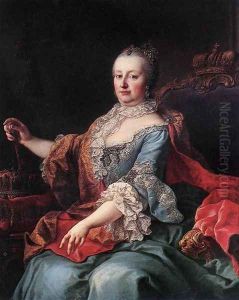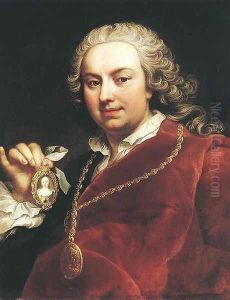Martin van, II Meytens Paintings
Martin van Meytens II, also known as Martin van Meytens the Younger, was born in 1695 in Stockholm, Sweden. He belonged to a family of Dutch painters; his father, Martin van Meytens the Elder, was also a notable artist. Despite his Dutch heritage, van Meytens spent the majority of his career in various courts across Europe, making a name for himself as a distinguished portrait painter during the 18th century. His early training is a subject of discussion among art historians, but it is believed that he received his initial artistic education from his father before traveling extensively to develop his skills further.
After spending time in Paris and Rome, where he was influenced by the vibrant artistic scenes and the works of contemporary masters, van Meytens settled in Vienna around the mid-1720s. It was in Vienna that his career truly flourished. He became a court painter to the Habsburgs, one of the most prestigious positions a European artist could attain at the time. His work was characterized by its elegance and attention to detail, qualities that made his portraits highly sought after by the nobility across Europe.
Van Meytens' style was indicative of the Rococo movement, known for its ornate and decorative qualities, yet his portraits also maintained a sense of realism and individuality of the subjects. He was particularly adept at depicting the opulence of the fabrics and jewels that adorned his sitters, a testament to the wealth and status of the European aristocracy of his era. Among his most famous works are portraits of Empress Maria Theresa, Franz I Stephan, and other members of the Habsburg family, which remain key documents of 18th-century European court life.
Despite his success, little is known about van Meytens' personal life, and many aspects of his career remain a subject of research. His legacy, however, is preserved in the numerous portraits that hang in museums and collections around the world. Martin van Meytens II passed away in 1770 in Vienna, leaving behind a body of work that continues to be celebrated for its craftsmanship and historical significance.






